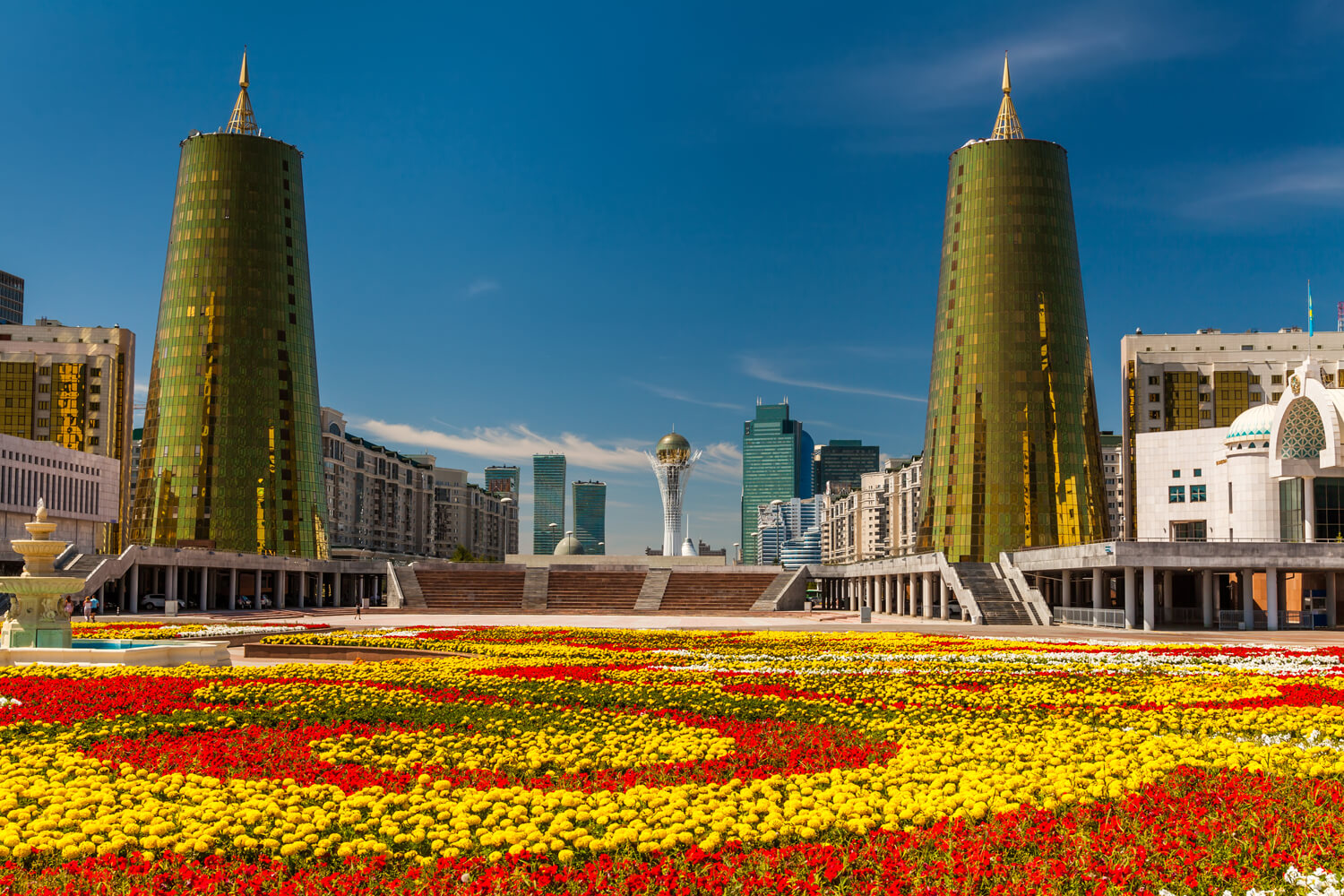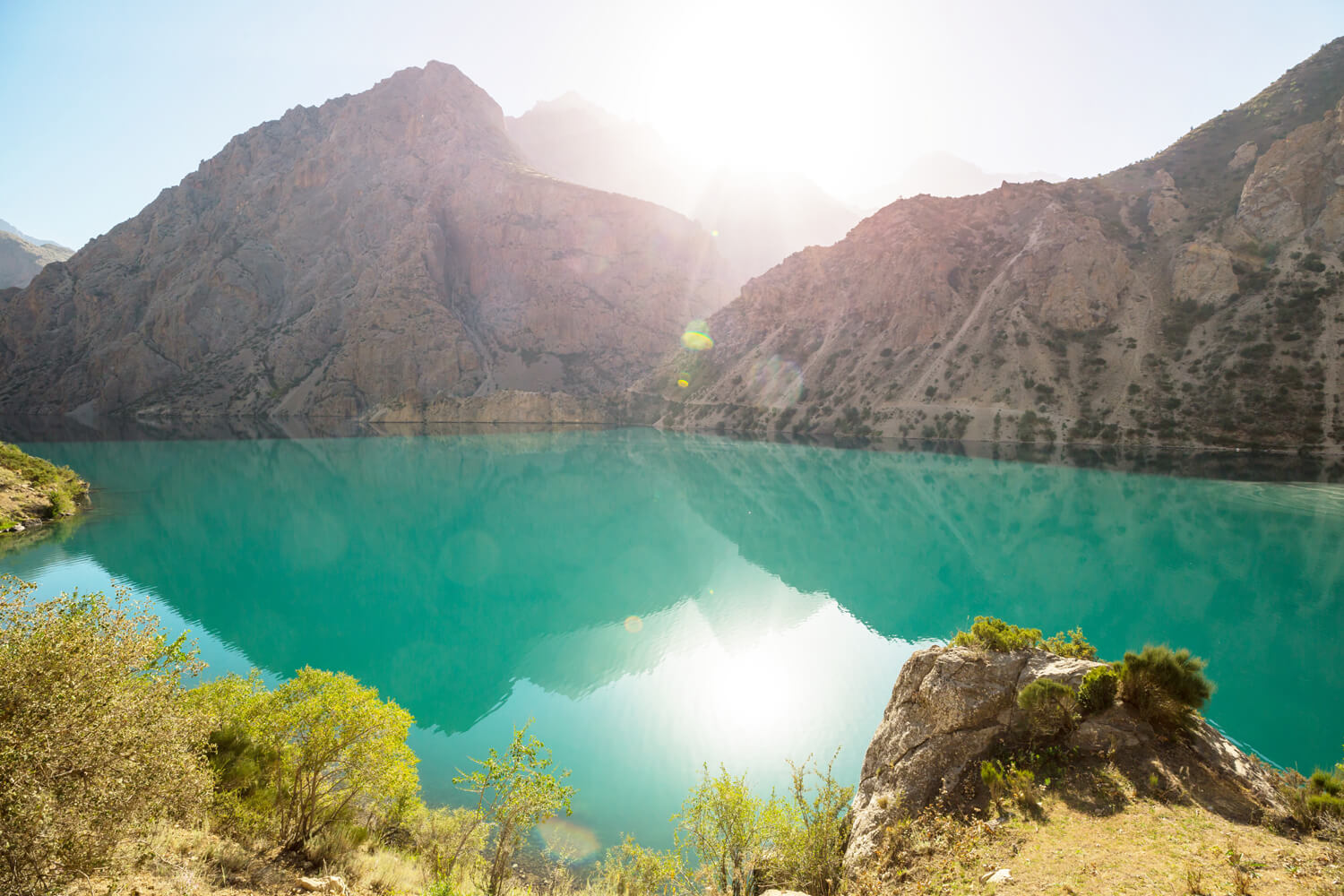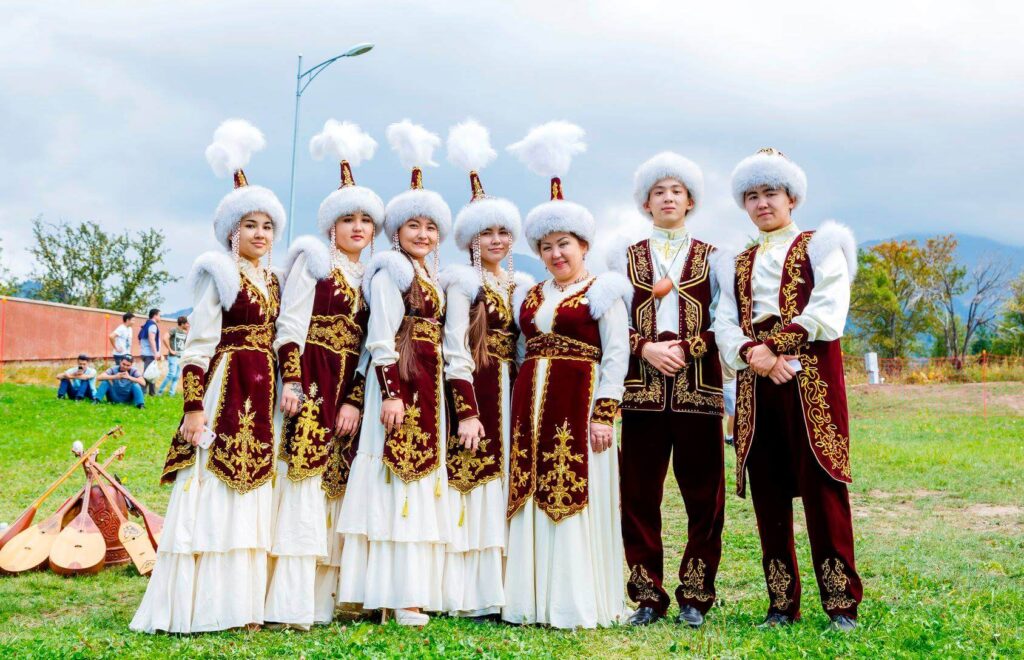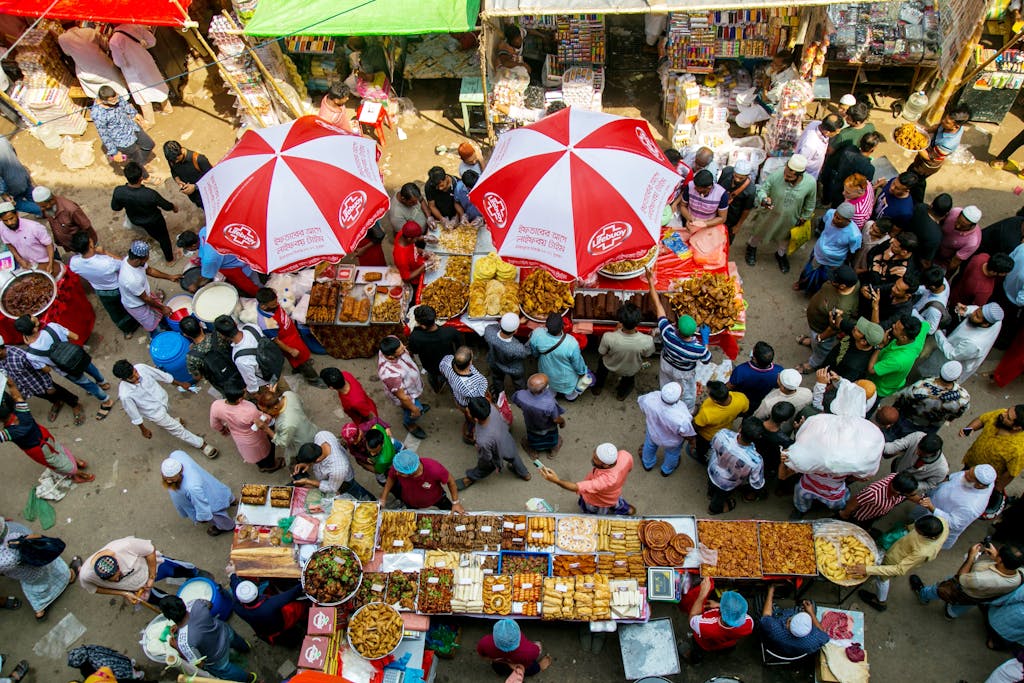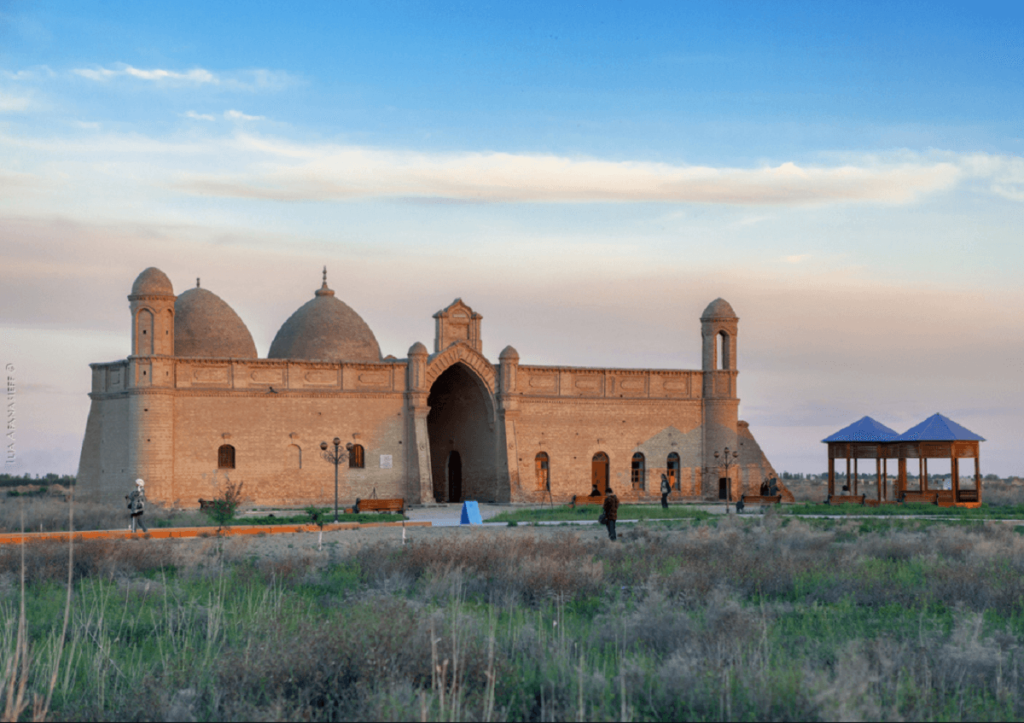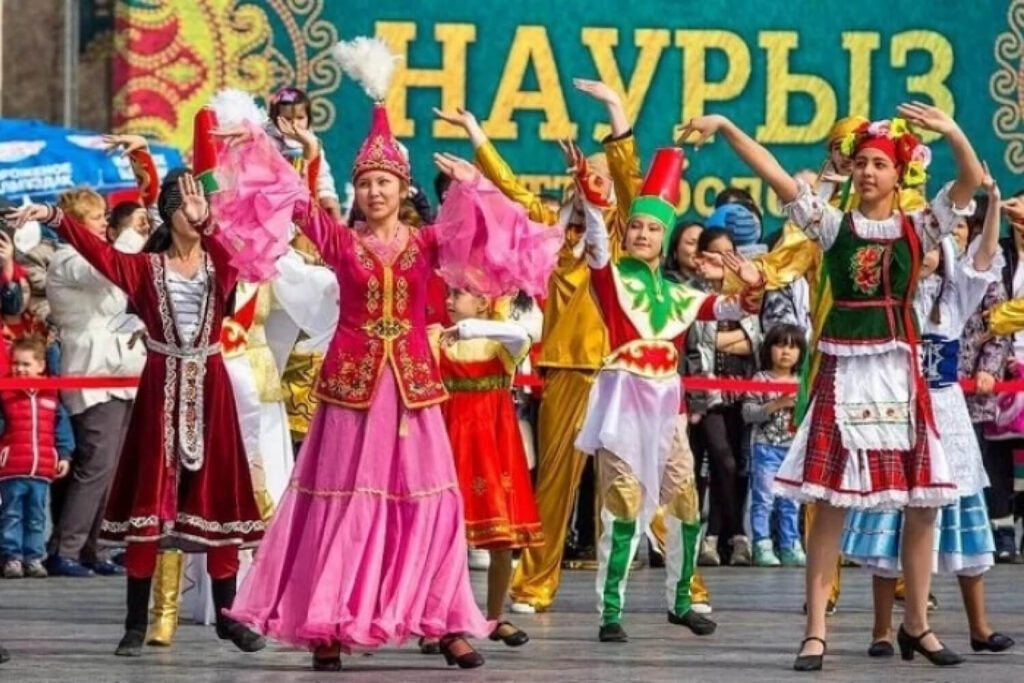Kazakhstan historical landmarks: Kazakhstan is rich in historical landmarks that reflect its diverse heritage, from ancient civilizations to Soviet-era architecture.
The Mausoleum of Khoja Ahmed Yasawi (Turkestan)
- Overview: This UNESCO World Heritage site is dedicated to the revered Sufi poet and philosopher Khoja Ahmed Yasawi, who is a pivotal figure in Kazakh history.
- Architecture: Built in the late 14th century, the mausoleum is an architectural masterpiece of the Timurid era, featuring intricate tile work, a massive dome, and unique architectural details that blend Islamic and Central Asian styles.
- Significance: The mausoleum is not only a burial site but also a center for pilgrimage, symbolizing the spread of Islam in the region. It represents the cultural and spiritual heritage of the Kazakh people.
Tamgaly Petroglyphs (Almaty Region)
- Overview: This archaeological site features thousands of rock carvings, dating back to the Bronze Age (around 12,000 years ago).
- Details: The petroglyphs depict scenes of daily life, rituals, animals, and shamanistic symbols, offering insights into the beliefs and lifestyle of ancient nomadic tribes.
- Significance: Recognized as a UNESCO World Heritage site, Tamgaly is crucial for understanding the history of human settlement in Kazakhstan and the cultural practices of its early inhabitants.
Add an overline text
Discover Kazakhstan
The Mausoleum of Aisha Bibi (Taraz)
- Overview: This beautiful mausoleum is dedicated to Aisha Bibi, a legendary figure in Kazakh folklore and a symbol of love.
- Architecture: Built in the 11th century, the mausoleum showcases exquisite terracotta designs and a distinctive dome, representing the architectural style of the time.
- Significance: It serves as a popular pilgrimage site and a testament to the rich cultural narratives within Kazakh history.
The Palace of Peace and Reconciliation (Astana)
- Overview: This modern architectural marvel, designed by Sir Norman Foster, was completed in 2006 and stands as a symbol of Kazakhstan’s commitment to cultural dialogue and peace.
- Architecture: The pyramid-shaped building is made of glass and steel and features a stunning interior with a grand hall, exhibition spaces, and a unique “Tree of Life” sculpture.
- Significance: The palace hosts various cultural and religious events, emphasizing Kazakhstan’s role as a center for dialogue among different cultures and religions.
The Great Mausoleum of Zenghiz Khan (Near the city of Ulytau)
- Overview: Though the exact location is debated, this mausoleum is believed to be the burial site of the legendary Mongolian leader Genghis Khan.
- Details: The mausoleum and the surrounding area are of great historical significance, representing the legacy of the Mongol Empire and its influence on Kazakhstan.
- Significance: It serves as a pilgrimage site for those interested in the history of the Mongol Empire and its connection to Kazakh heritage.
The Citadel of Otrar
- Overview: This ancient city was once a thriving trade center on the Silk Road and is now an archaeological site.
- Details: The ruins include remnants of fortifications, residential areas, and a complex irrigation system, showcasing the advanced engineering of its time.
- Significance: Otrar played a vital role in the spread of culture, commerce, and knowledge along the Silk Road, making it an important historical landmark.
Add an overline text
Discover Kazakhstan
Kyzylorda Region: The Underground Mosque of Beket-Ata
- Overview: This unique mosque is carved into the rock and is dedicated to the Sufi saint Beket-Ata, an important figure in Kazakh spirituality.
- Architecture: The mosque features a network of underground chambers and tunnels, providing a serene atmosphere for worship.
- Significance: It is a pilgrimage site for many Kazakhs seeking spiritual guidance and reflects the deep-rooted Sufi traditions in the region.
The Eternal Flame and Victory Memorial (Almaty)
- Overview: This memorial commemorates the soldiers who fought in World War II and honors the victims of the war.
- Details: The Eternal Flame is part of a larger memorial complex that includes statues, plaques, and an impressive obelisk.
- Significance: It serves as a poignant reminder of the sacrifices made during the war and is a place of remembrance and reflection for the local community.
Baikonur Cosmodrome
- Overview: The world’s first and largest operational space launch facility, established in 1955, is located in Kazakhstan.
- Significance: It has played a crucial role in space exploration, including launching the first human, Yuri Gagarin, into space. The site reflects Kazakhstan’s significant contribution to the space age.
The City of Turkestan
- Overview: A historic city that served as a cultural and spiritual center of the Kazakh people, Turkestan is home to several historical sites.
- Significance: Beyond the mausoleum of Khoja Ahmed Yasawi, the city features ancient structures and reflects the fusion of various cultures and religions throughout its history.
Conclusion
Kazakhstan’s historical landmarks offer a fascinating glimpse into the country’s rich heritage, showcasing a blend of ancient nomadic traditions, Islamic culture, and modern influences. These sites serve as reminders of Kazakhstan’s complex history and the diverse cultures that have shaped its identity. Whether through ancient petroglyphs or modern architectural marvels, each landmark tells a story of resilience, spirituality, and the intertwining of past and present.


